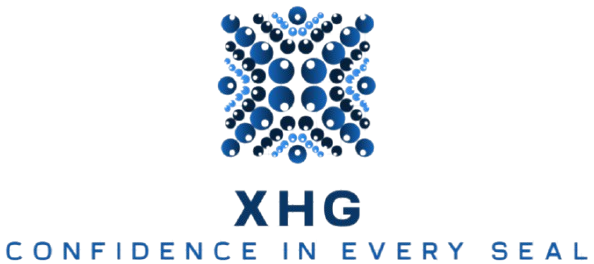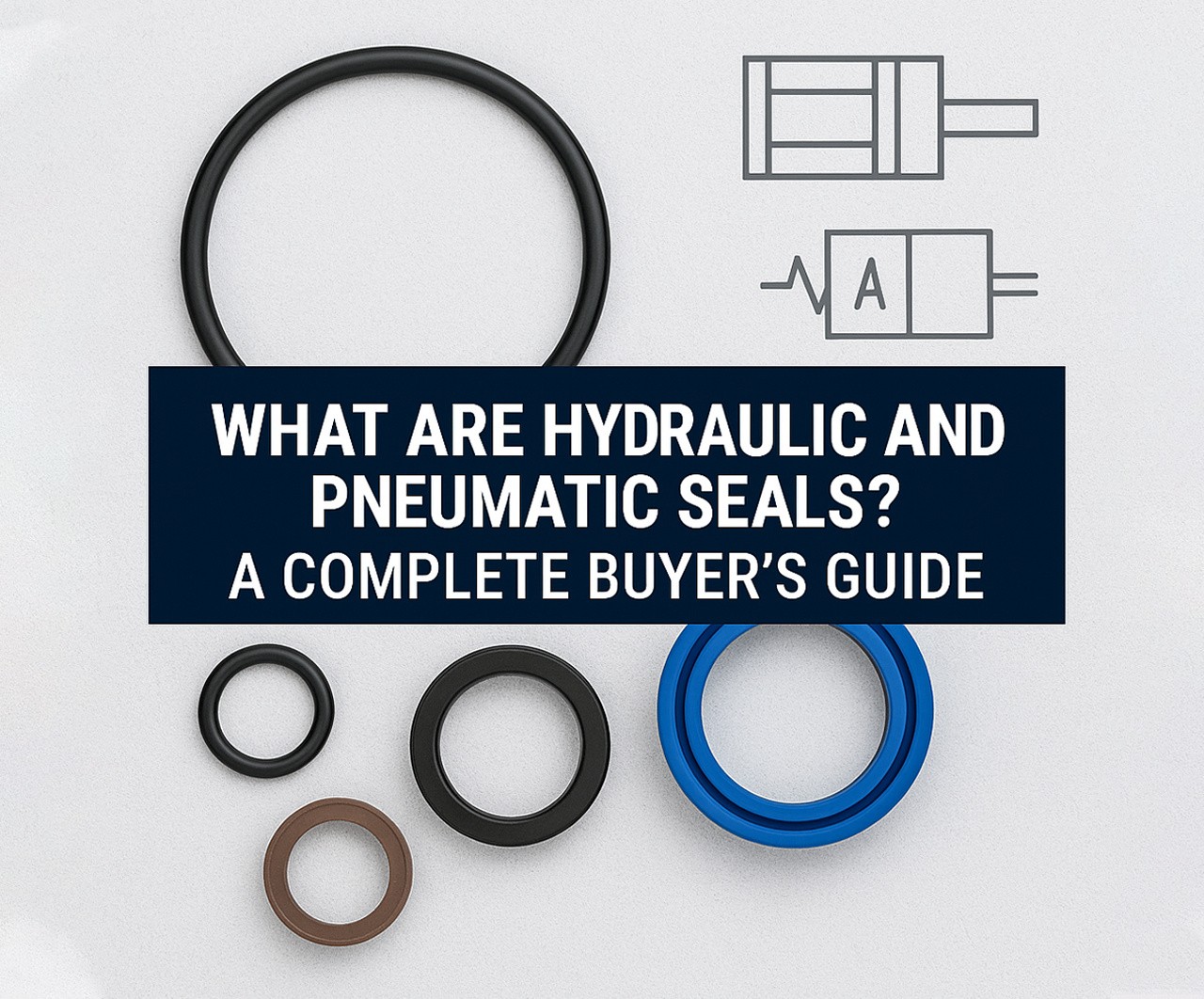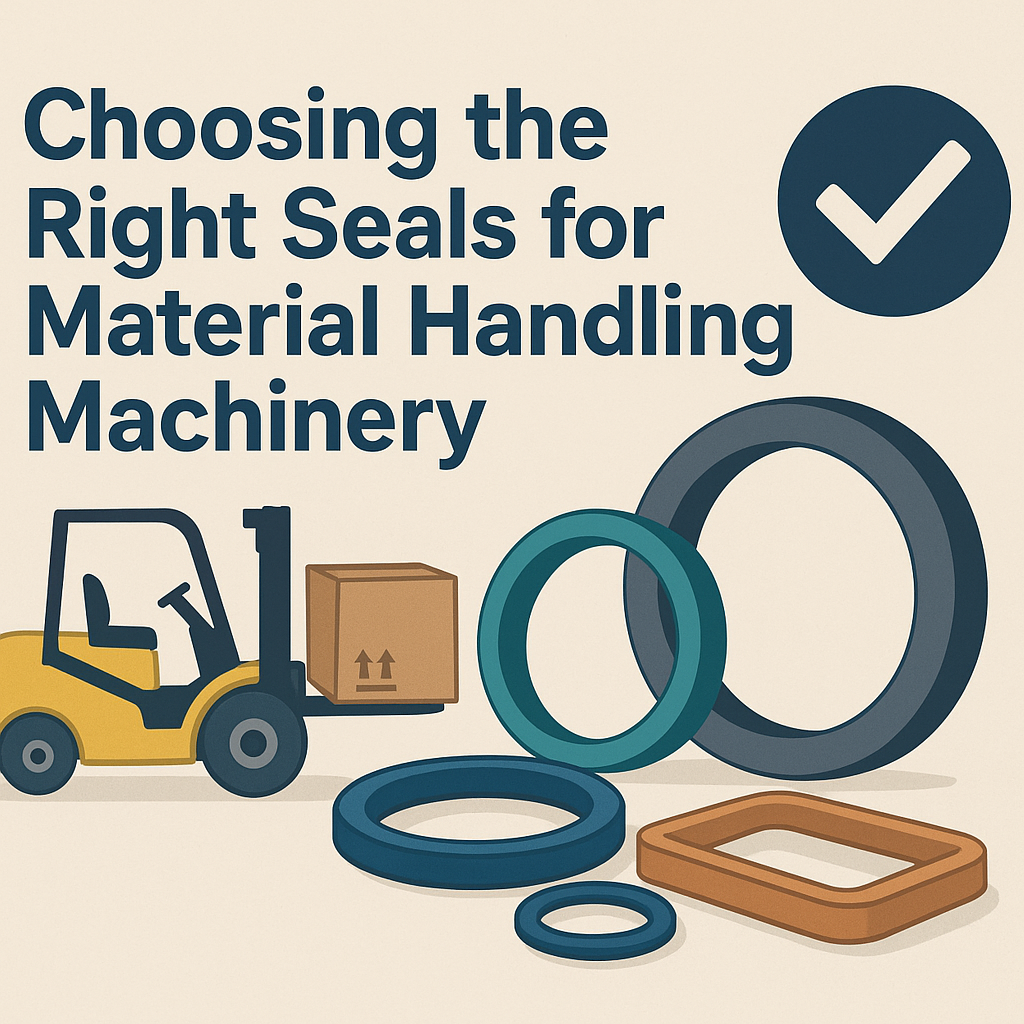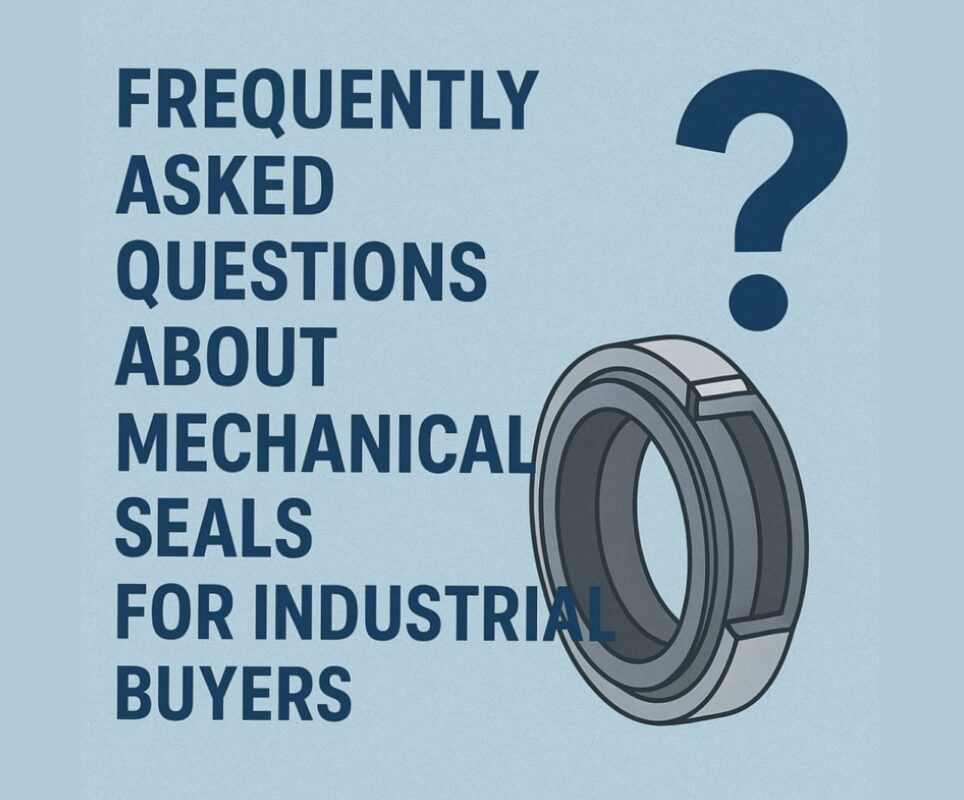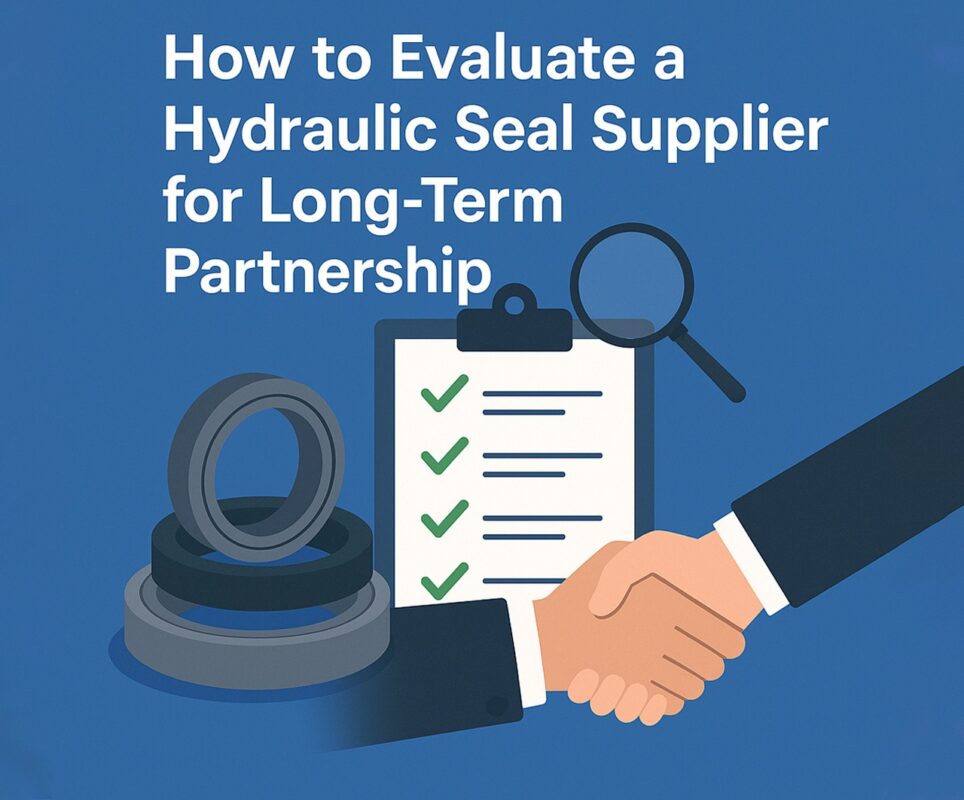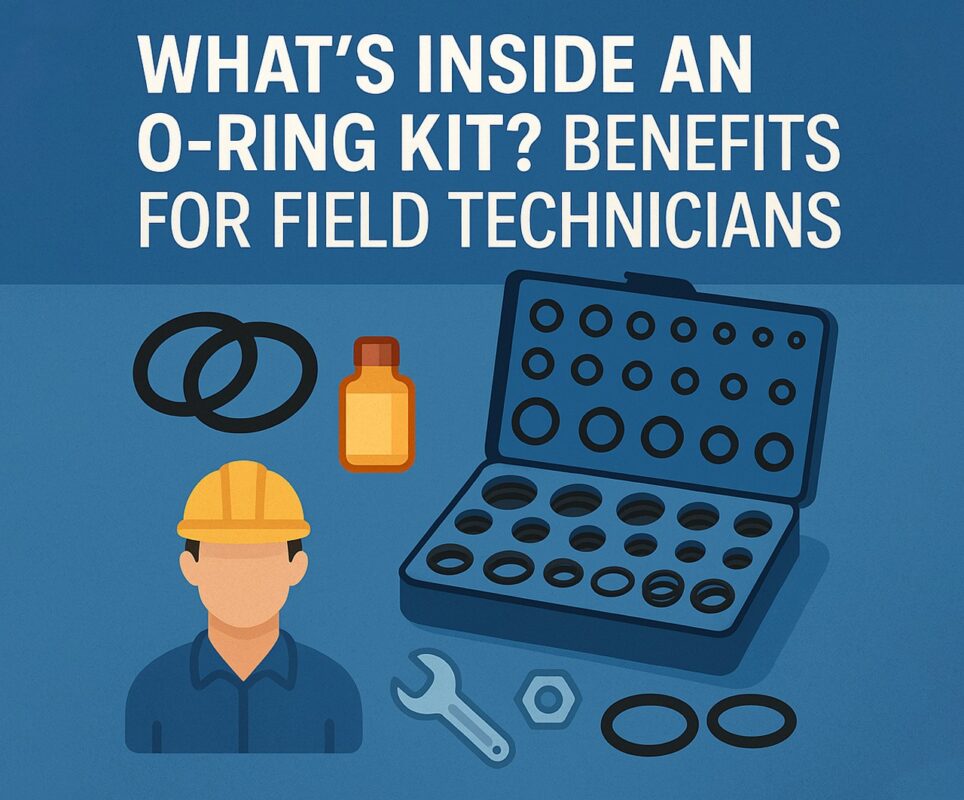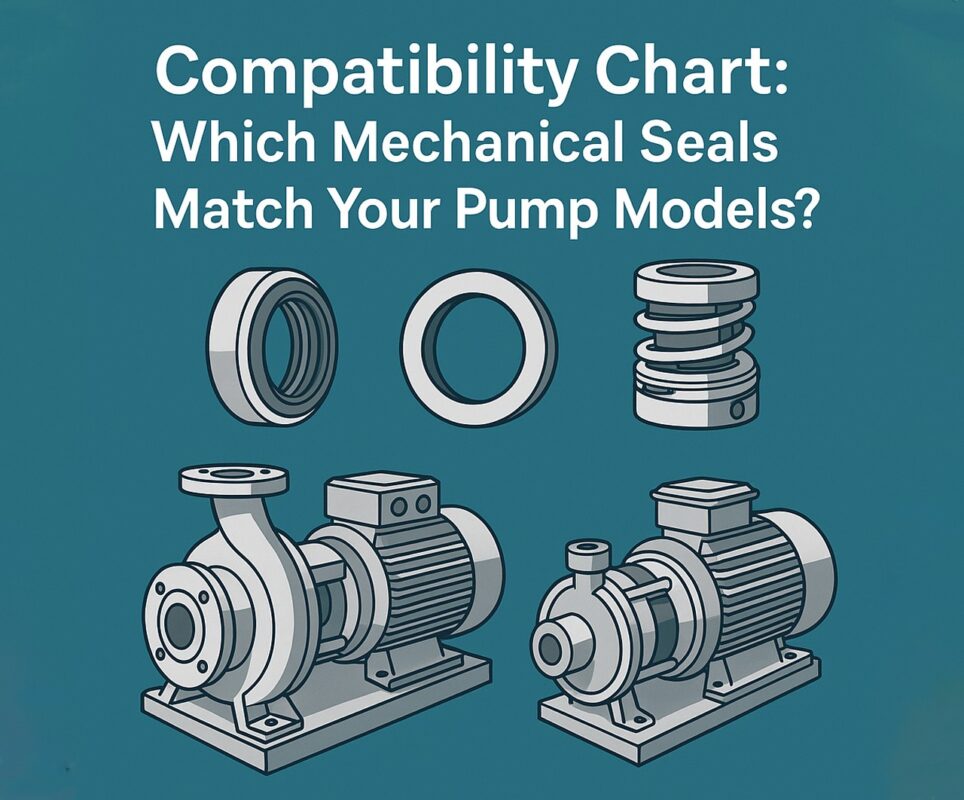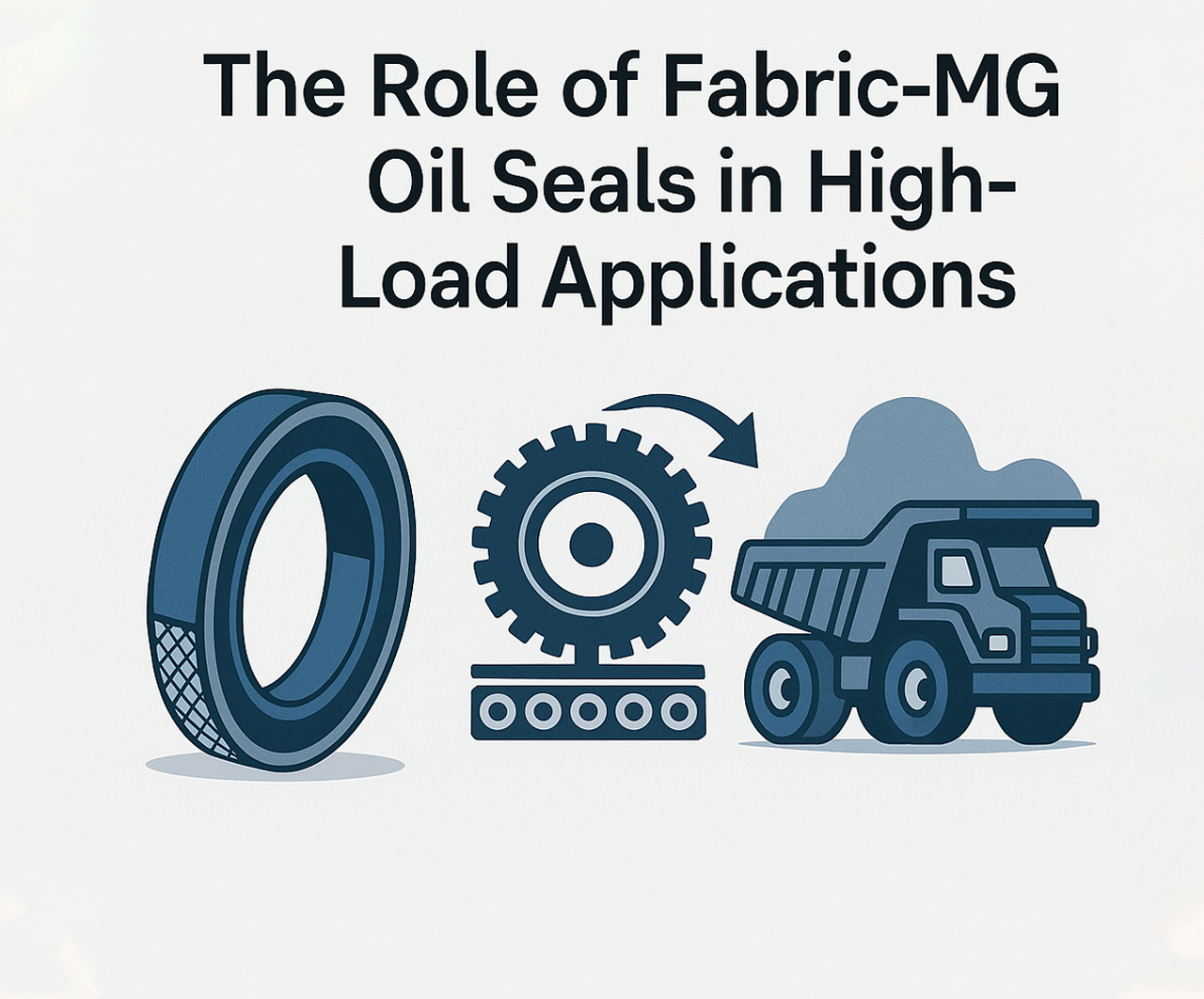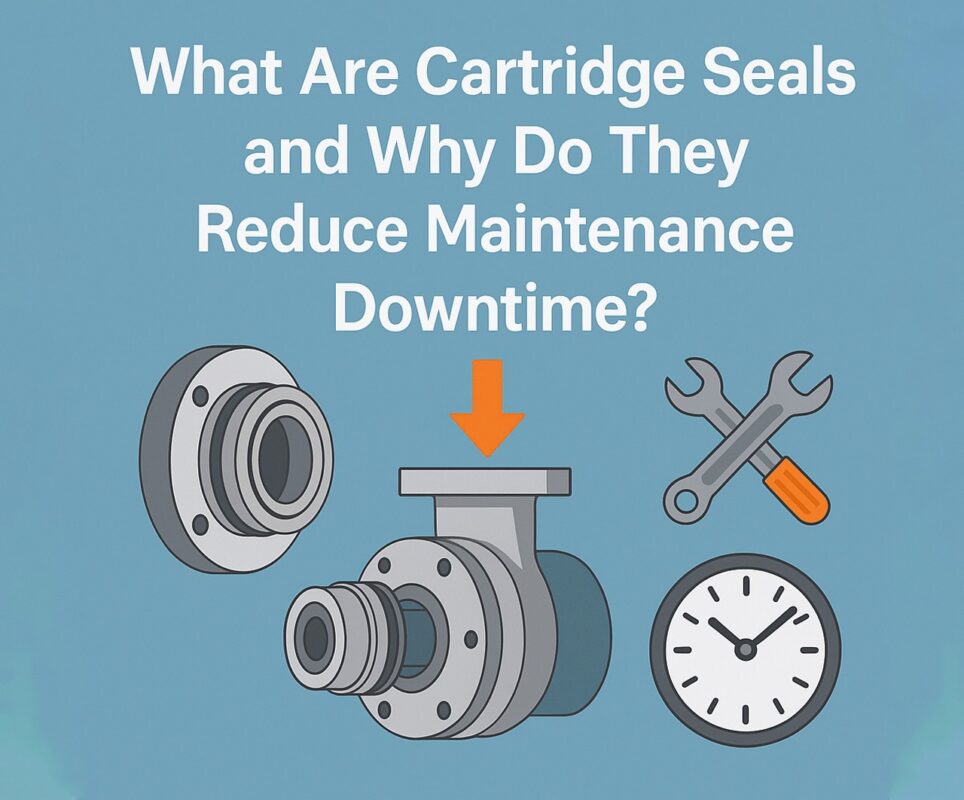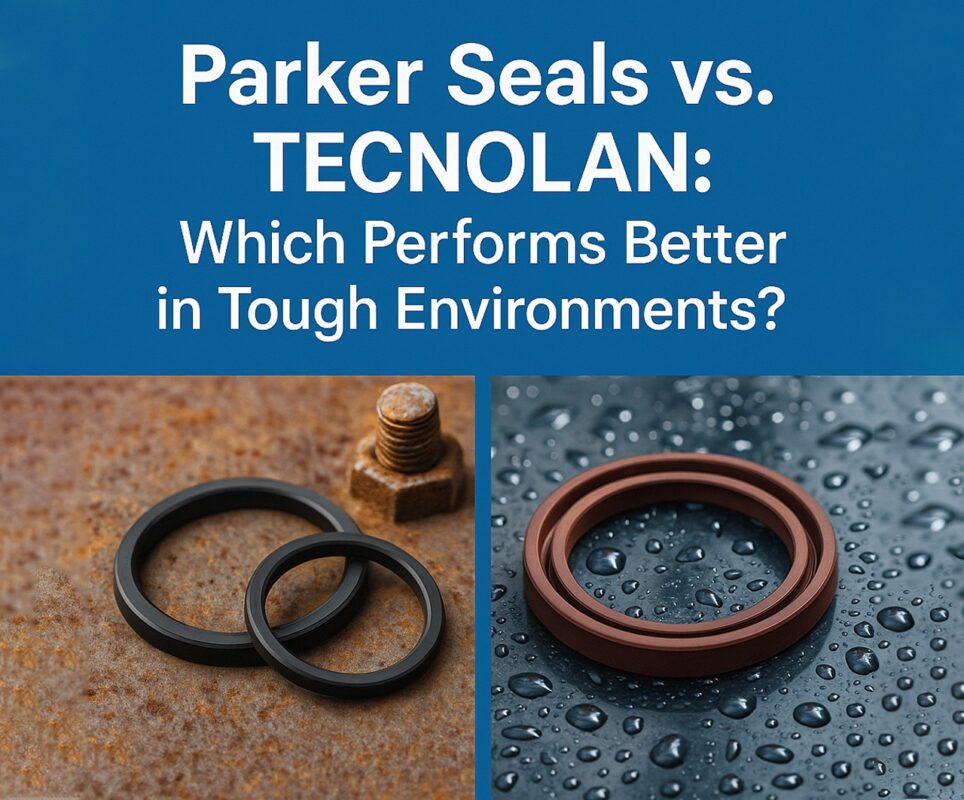If you work with heavy machinery, industrial equipment, or any system using fluid or air power, then hydraulic seals, pneumatic seal components, and the essential hydraulic cylinder seal are terms you need to know. These unsung heroes are critical to performance, safety, and durability. Choosing the right seal isn’t just a technical detail—it’s a high-stakes decision that impacts everything from leak prevention to maintenance intervals and operational efficiency.
This buyer’s guide covers everything you need to know about these seals: types, materials, applications, failures, and how to select the best fit for your system. Know more..
What Are Hydraulic and Pneumatic Seals?
At their core, both hydraulic seals and pneumatic seal components serve one essential function: preventing fluid or air leakage while maintaining pressure and separating components within a system. They are used in cylinders, valves, pumps, and many motion-control systems.
- Hydraulic seals are designed for systems using liquids like oil or water-based fluids.
- A pneumatic seal is designed for compressed air systems.
The difference in operating medium (liquid vs. gas) drives variations in design, material, and pressure resistance.
The Role of Hydraulic Cylinder Seals
Every hydraulic cylinder seal is part of a larger system that ensures smooth linear motion. Cylinders are the heart of hydraulic machinery, and their seals:
- Contain pressurized fluid within the cylinder
- Prevent external contamination
- Separate different pressure zones
- Help guide the piston rod
If a hydraulic cylinder seal fails, so does the cylinder. This results in system inefficiency, component wear, and potential equipment downtime.
Key Types of Seals
For Hydraulic Systems:
- Piston Seals
- Seal around the piston head
- Prevent fluid from crossing between sides of the piston
- Rod Seals
- Prevent fluid from leaking out of the cylinder along the rod
- Wiper Seals (Scrapers)
- Clean debris off the rod before re-entry
- Essential for outdoor and dirty environments
- Buffer Seals
- Absorb shock from pressure spikes, prolonging hydraulic cylinder seal life
- Wear Rings (Guide Rings)
- Prevent metal-to-metal contact, guiding the piston or rod
For Pneumatic Systems:
- Rod Seals
- Same function as hydraulic but often made from softer, more flexible material
- Piston Seals
- Prevent air leakage between chambers
- Cushion Seals
- Absorb shock at stroke ends
- Static Seals (O-Rings)
- Seal stationary parts in pneumatic valves and cylinders
Every hydraulic seals or pneumatic seal component works in coordination to keep systems leak-free and efficient.
Material Matters: Matching Seals to Applications
Choosing the right material is just as critical as selecting the seal type. Material affects temperature resistance, chemical compatibility, wear tolerance, and flexibility.
Common Materials for Hydraulic and Pneumatic Seals:
- Nitrile (NBR)
- Excellent for general-purpose hydraulic seals
- Resists oil and water-based fluids
- Polyurethane (PU)
- Durable and wear-resistant
- Often used for hydraulic cylinder seal designs under high pressure
- PTFE (Teflon)
- Extremely low friction
- Resistant to chemicals and high temperatures
- EPDM
- Great for water-based fluids, not compatible with petroleum oils
- Common in pneumatic seal systems
- FKM (Viton)
- High-temperature stability and chemical resistance
- More expensive, used in extreme environments
Key Differences: Hydraulic vs Pneumatic Seals
| Feature | Hydraulic Seals | Pneumatic Seal |
| Medium | Oil or fluid | Compressed air |
| Pressure | Up to 5,000 psi (or more) | Usually below 150 psi |
| Material Stiffness | Higher (for fluid containment) | Softer (flexible, to seal air) |
| Lubrication | Fluid provides inherent lubrication | Often requires external lubrication |
| Friction | Moderate | Low (air is less viscous) |
| Wear Tolerance | High | Moderate to low |
Each hydraulic cylinder seal and pneumatic seal must be chosen to match these operating characteristics.
Applications: Where Seals Matter Most
Hydraulic Seals Are Common In:
- Construction machinery (excavators, loaders)
- Agricultural equipment
- Industrial presses and injection molding machines
- Forklifts and hydraulic lifts
Pneumatic Seals Are Found In:
- Robotics and automation systems
- Packaging machinery
- Pneumatic tools and actuators
- Cleanroom environments
Whether you’re replacing a hydraulic cylinder seal in a crane or specifying a pneumatic seal for an assembly line robot, correct application matters.
Common Seal Failures and How to Avoid Them
- Wear and Tear
- Caused by friction, contamination, or incorrect fit
- Prevention: Choose high-quality materials and proper sizing
- Chemical Degradation
- Incompatible fluids or greases break down the seal
- Prevention: Match material to chemical environment
- Thermal Breakdown
- Overheating softens or deforms seals
- Prevention: Choose temperature-resistant materials (like FKM or PTFE)
- Improper Installation
- Nicked or twisted seals during fitting cause leaks
- Prevention: Use proper installation tools and training
- Extrusion
- Seal gets forced into clearance gaps under pressure
- Prevention: Use back-up rings or stronger materials like PU
A failed hydraulic seals set can result in costly downtime, while a leaking pneumatic seal can reduce pressure and accuracy.
How to Select the Right Seal
Use these criteria as your checklist:
- Medium Compatibility
- Is your system using fluid or air? This determines if you need hydraulic seals or pneumatic seal options.
- Operating Pressure
- Know the maximum and average pressure the seal will face.
- Temperature Range
- Consider startup, running, and shutdown temperatures.
- Speed of Operation
- Higher speed means more friction and potential heat.
- Chemical Exposure
- Factor in cleaning fluids, lubricants, or other chemicals.
- Cycle Frequency
- Frequent movement means the seal must withstand constant wear.
- Shaft or Rod Size
- Precision matters—always match the seal to the correct dimensions.
- Installation Constraints
- Some seals are easier to install in tight spaces than others.
Use manufacturer data sheets and consult with experts when choosing your hydraulic cylinder seal or pneumatic seal.
Trends in Seal Technology
As industries push for smarter, more efficient machinery, seal technology is evolving too.
- Self-lubricating materials reduce maintenance in high-cycle applications
- Smart seals with embedded sensors to monitor pressure, wear, and temperature
- Eco-friendly materials for sustainable machinery design
- High-performance hybrids blending PTFE, PU, and elastomers for extended life
Innovations in hydraulic seals and pneumatic seal design are now central to system engineering.
Working with the Right Supplier
Don’t underestimate the value of supplier experience. Reliable vendors offer:
- Custom seal engineering
- Rapid prototyping
- Full application analysis
- Support for regulatory compliance (FDA, NSF, ISO)
This is especially important when specifying a hydraulic cylinder seal for a safety-critical application like aerospace or medical devices.
Final Thoughts: Invest in the Right Seal, Avoid the Wrong Failures
Whether you’re maintaining an aging hydraulic press or designing a new pneumatic actuator, seals may be small, but their impact is massive. A poor-quality pneumatic seal might cost pennies upfront but thousands in system failure. The wrong hydraulic cylinder seal could grind your operation to a halt.
Seals aren’t one-size-fits-all. They’re tailored components that must match your medium, pressure, speed, temperature, and equipment needs. Choose smartly, install carefully, and monitor regularly—and your systems will stay sealed, safe, and efficient.
The next time you spec a component, don’t just pick any seal. Choose the right hydraulic seals, the best pneumatic seal, and the most durable hydraulic cylinder seal for your needs—and let your machinery perform to its full potential.
